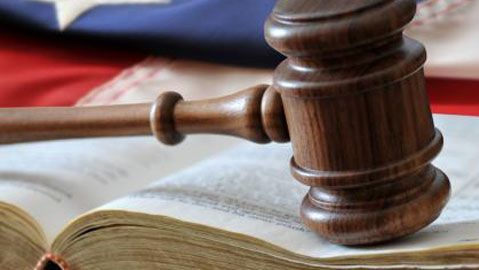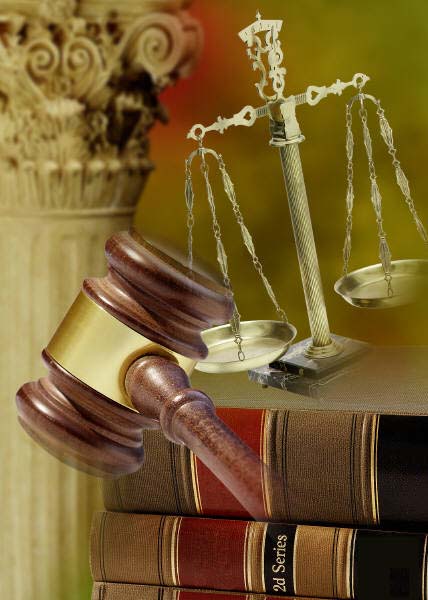This is the eighth of the 2014 LegalTech New York (LTNY) Thought Leader Interview series. eDiscoveryDaily interviewed several thought leaders after LTNY this year (don’t get us started) and generally asked each of them the following questions:
- What significant eDiscovery trends did you see at LTNY this year and what do you see for 2014?
- With new amendments to discovery provisions of the Federal Rules of Civil Procedure now in the comment phase, do you see those being approved this year and what do you see as the impact of those Rules changes?
- It seems despite numerous resources in the industry, most attorneys still don’t know a lot about eDiscovery? Do you agree with that and, if so, what do you think can be done to improve the situation?
- What are you working on that you’d like our readers to know about?
Today’s thought leader is Jason R. Baron. An internationally recognized speaker and author on the preservation of electronic documents, Jason is a member of Drinker Biddle’s Information Governance and eDiscovery practice. Jason previously served as Director of Litigation for the U.S. National Archives and Records Administration (NARA) and as trial lawyer and senior counsel at the Department of Justice. He was a founding co-coordinator of the National Institute of Standards and Technology TREC Legal Track, a multi-year international information retrieval project devoted to evaluating search issues in a legal context. He also founded the international DESI (Discovery of Electronically Stored Information) workshop series, bringing together lawyers and academics to discuss cutting-edge issues in eDiscovery.
What significant eDiscovery trends did you see at LTNY this year and what do you see for 2014?
I think that it was clear, not only to me but to many other attendees that I spoke with at the show, that there was a greater focus and attention this year on Information Governance. It’s the new black. You saw that especially in the educational sessions. Now my good friend Ralph Losey, in a recent posting on his brillilant blog e-Discovery Team®, referred in passing to the topic of Information Governance as “boring” – however, what I think he meant to say is that if Information Governance is simply viewed as the current buzzword for what constitutes electronic recordkeeping best practices, that would be unfortunate. It’s a lot more profound than that.
In my view, the types of analytics that we use in eDiscovery for predictive coding have an important role in Information Governance as well. The research that I had some role in, coming out of the TREC Legal Track, and subsequent articles by Maura Grossman, Patrick Oot and others, have all helped to crystallize what constitute best practices in the eDiscovery search and document review space. But the knowledge that we have gained about analytics in these various research studies, as validated in recent court opinions like Da Silva Moore, are applicable to a much broader application than merely in eDiscovery practice.
That is to say, we can all be smarter about using analytical methods to solve lots of legal issues which arise outside of the narrow band of eDiscovery but inside the broader realm of Information Governance. Ralph discussed this in a recent blog when he referred to the idea of using “presuit” analytics to predict and prevent lawsuits from happening in the first place. Ralph’s column shows that he certainly gets it, and that I can count him in as a true believer in pre-litigation analytics being accomplished to lower corporate overall risk including the prevention of potential lawsuits.
So, the hottest topic at LegalTech was Information Governance and, as part of that discussion, a conversation about what best practices are from a technology perspective in the space. What other trends out there were noted?
Other themes at LegalTech that reflect trends specifically affecting legal and eDiscovery practice: First, it’s clear to us that the cloud is becoming a dominant paradigm for the storage of big data, and that we need to continue to understand how eDiscovery in particular can be optimized in cloud environments. Second, there is increased attention to the notion of technological competence, in light of the amendments to the Model professional rules of responsibility, including the comment to Rule 1 about the need for attorneys to be technologically competent in keeping up with the law. That comment certainly means something in the eDiscovery space. Beyond those two, we saw a conversation about new technologies and new ideas that are happening and that need to be absorbed into the practice of law – for example, sessions on drones and sessions that noted the “Internet of things”. In all sorts of ways, these various discussion threads show that there are a thousand different ways to collect data in the world, all of it is ESI and all of it needs to be factored in when we’re litigating cases and when we’re trying to govern the data that organizations hold.
With new amendments to discovery provisions of the Federal Rules of Civil Procedure now in the comment phase, do you see those being approved this year and what do you see as the impact of those Rules changes?
Well, my crystal ball tells me not to make predictions. However, we’re now up to 700 comments in the last week leading up to the February 15, 2014 deadline for responding. [Editor’s note: over 2,000 comments were submitted by the actual deadline.] Those comments are sharply divided between a community of plaintiffs’ counsel who question the necessity for rules change, and the defense bar, which at least a part of which strongly urges rules changes in the belief that the present rules encourage over-preservation of evidence, and that more in the way of limitations imposed on discovery should now be imposed. So, that’s the battleground. I think a good bet in the space is that the language that emerges is going to be much like the amendments currently proposed, but no one knows for sure.
My view about the amendments is a different one than what has been reflected in most of the comments, which I have put forward on behalf of the Information Governance Initiative (see below). The view that I have is that there are aspects of the rules amendments that can be supported, and certainly Federal Rule of Civil Procedure 1 should be amended to incorporate the notion of parties cooperating. However, what I believe to be of greater importance than rules change is a recognition on the part of the judiciary as well as all litigants that the volume and complexity of data is doubling every couple of years, and the technological environment is one that should include advanced tools to help remediate the severe challenges we all face in terms of the preservation of ESI. We live in a world of exponential growth of big data and we need to deal with that fact at a more foundational level than with rules changes for litigation. So, I urge that we pay attention to both best practices as a matter of technology in the maintenance of big data in electronic systems, as well as continued education of the bench and bar on how to deal with this new reality — because we’re not going back to the 20th century. The world of exabytes that we live in is only getting bigger and we have to deal with it. In my mind, I’m attempting to carve out a middle ground where the rules debate is not as draconian or as starkly imagined as parties would reflect in the comments, but rather that we need to step back and ask more fundamental questions.
It seems despite numerous resources in the industry, most attorneys still don’t know a lot about eDiscovery? Do you agree with that and, if so, what do you think can be done to improve the situation?
Every survey that I know of drives this point home, that there is a “bubble” that some of us practice in where we go from conference to conference, acting as if the 2006 rules amendments are “old hat,” whereas the concept of how to deal with ESI is something new and novel to many others. So, there is a learning curve that exists where the greater part of the legal community needs to become better versed in the more advanced aspects of eDiscovery. By now, everyone knows about email potentially being relevant evidence, but not very many people could step through a workflow on predictive coding. Nor do they necessarily have to do so in a large swath of cases that, candidly, are not a candidate for the most advanced methods. We need to apply some degree of proportionality analysis to competence and the level of competence that someone needs is dependent on the complexity of the case. If there is giant litigation that involves billions of documents, then you really need to understand the technical issues at hand, and what questions to ask, to ensure that you’re using the most advanced and efficient search and document review methods. On the other hand, if you have a case that is only a couple of hundred documents that is in state court or some local jurisdiction, then these more advanced methods are obviously not needed.
So, I think there is an aspect that you’re exactly right to point out, that this is all still new, and we are still maturing in mapping out defensible ediscovery practices in the post-2006 Rules amendment world. But, increasingly, as I have said, we live in a world of digital information. Whether it’s a family law case involving the exchange of emails or an employment case or even a hit and run case involving GPS data, attorneys are necessarily finding that there cases do indeed involve aspects of discovery where digital or electronic evidence is material and important. To that extent, all lawyers need to know something about how to preserve, how to collect, how to review and how to produce ESI. It is clear to me as the years go by that the bar is getting raised in a greater and greater number of cases and that more and more lawyers need to be competent with respect to basic eDiscovery.
What are you working on that you’d like our readers to know about?
Here’s one thing I’m very excited about. Bennett Borden, who is chair of the Information Governance and eDiscovery practice here at Drinker Biddle, and Barclay Blair, who runs the company ViaLumina and is a thought leader in the Information Governance space, have teamed up to found the Information Governance Initiative and invited me to act as Co-Chair. The Initiative is a vendor-neutral industry consortium and think tank which has as its mission a goal of fostering discussion about best practices in the Information Governance space. We have received a large outpouring of goodwill in the form of individuals joining up as members (it’s free to join, by the way), as well as corporate sponsors who have products and services that address IG issues. And we hope through various platforms that there will be a better smarter dialogue about how to deal with the challenges of big data and Information Governance using many of the analytical methods that I alluded to earlier. This is exciting to be part of and I’m delighted, after joining Drinker Biddle, to be able to work with Bennett, Barclay, as well as Jay Brudz and others, to attempt to provide some measure of thought leadership in this space.
I should note that there are other great organizations who are also putting on programs, including The Sedona Conference, which has put out a wonderful Commentary on Information Governance spearheaded by Sedona WG1 chair Conor Crowley, that’s freely available for download. Sedona and ARMA have also teamed up to put on an information governance conference coming up in April 2014 in Florida. These are all great to advance the ball. Hopefully, all of our collective efforts will help to jump start serious conversations around optimizing IG. For my part, I certainly would encourage individuals to look up the IG Initiative and participate in future activities. (See www.iginitiative.com.)
Thanks, Jason, for participating in the interview!
And to the readers, as always, please share any comments you might have or if you’d like to know more about a particular topic!
Disclaimer: The views represented herein are exclusively the views of the author, and do not necessarily represent the views held by CloudNine Discovery. eDiscoveryDaily is made available by CloudNine Discovery solely for educational purposes to provide general information about general eDiscovery principles and not to provide specific legal advice applicable to any particular circumstance. eDiscoveryDaily should not be used as a substitute for competent legal advice from a lawyer you have retained and who has agreed to represent you.





